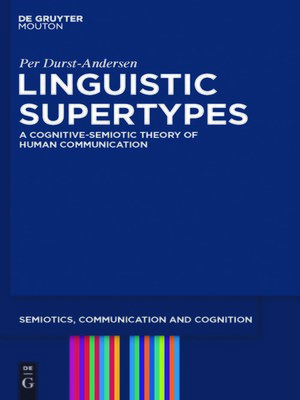Linguistic Supertypes
ebook ∣ A Cognitive-Semiotic Theory of Human Communication · Semiotics, Communication and Cognition [SCC]
By Per Durst-Andersen

Sign up to save your library
With an OverDrive account, you can save your favorite libraries for at-a-glance information about availability. Find out more about OverDrive accounts.
Find this title in Libby, the library reading app by OverDrive.



Search for a digital library with this title
Title found at these libraries:
| Library Name | Distance |
|---|---|
| Loading... |
The book offers a completely new view of language and of languages such as Russian, Chinese, Bulgarian, Georgian, Danish and English by dividing them into three supertypes on the basis of a step-by-step examination of their relationship to perception and cognition, their representation of situations and their use in oral and written discourse. The dynamic processing of visual stimuli involves three stages: input (experience), intake (understanding) and outcome (a combination). The very choice among three modalities of existence gives a language a certain voice — either the voice of reality based on situations, the speaker's voice involving experiences or the hearer's voice grounded on information. This makes grammar a prime index: all symbols are static and impotent and need a vehicle, i.e. grammar, which can bring them to the proper point of reference. Language is shown to be a living organism with a determinant category, aspect, mood or tense, which conquers territory from other potential competitors trying to create harmony between verbal and nominal categories. It is demonstrated that the communication processes are different in the three supertypes, although in all three cases the speaker must choose between a public and a private voice before the grammar is put into use.







